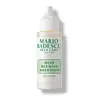What's inside
What's inside
 Key Ingredients
Key Ingredients

 Benefits
Benefits

 Concerns
Concerns

 Ingredients Side-by-side
Ingredients Side-by-side

Allantoin
Skin ConditioningBiotin
AntiseborrhoeicCitric Acid
BufferingDisodium Phosphate
BufferingGlycerin
HumectantHydrolyzed Yeast Protein
Skin ConditioningIsopropyl Alcohol
SolventIsopropyl Myristate
EmollientLactic Acid
BufferingNiacinamide
SmoothingPanthenol
Skin ConditioningPhenoxyethanol
PreservativePotassium Sorbate
PreservativePropylene Carbonate
SolventPropylene Glycol
HumectantPyridoxine Hcl
Skin ConditioningSodium Hydroxide
BufferingStearalkonium Hectorite
Gel FormingThreonine
Water
Skin ConditioningZinc Oxide
Cosmetic ColorantAllantoin, Biotin, Citric Acid, Disodium Phosphate, Glycerin, Hydrolyzed Yeast Protein, Isopropyl Alcohol, Isopropyl Myristate, Lactic Acid, Niacinamide, Panthenol, Phenoxyethanol, Potassium Sorbate, Propylene Carbonate, Propylene Glycol, Pyridoxine Hcl, Sodium Hydroxide, Stearalkonium Hectorite, Threonine, Water, Zinc Oxide
Salicylic Acid 2%
MaskingWater
Skin ConditioningPropanediol
SolventGlycerin
HumectantPentylene Glycol
Skin ConditioningDicaprylyl Carbonate
EmollientBehenyl Alcohol
EmollientDimethyl Isosorbide
SolventPhysalis Pubescens Fruit Juice
Skin ConditioningAlbatrellus Confluens Extract
HumectantUrea
BufferingYeast Amino Acids
HumectantTrehalose
HumectantTaurine
BufferingInositol
HumectantBetaine
HumectantAllantoin
Skin ConditioningPolylysine
Tocopherol
AntioxidantPullulan
Caprylic/Capric Triglyceride
MaskingLecithin
EmollientPhytosterols
Skin ConditioningCetyl Alcohol
EmollientStearyl Alcohol
EmollientGlyceryl Stearate
EmollientPolyglyceryl-10 Myristate
Skin ConditioningMenthyl Lactate
MaskingXanthan Gum
EmulsifyingSclerotium Gum
Emulsion StabilisingHydrogenated Lecithin
EmulsifyingLeuconostoc/Radish Root Ferment Filtrate
AntimicrobialSilica
AbrasiveDisodium EDTA
Sodium Hydroxide
BufferingCitric Acid
BufferingSalicylic Acid 2%, Water, Propanediol, Glycerin, Pentylene Glycol, Dicaprylyl Carbonate, Behenyl Alcohol, Dimethyl Isosorbide, Physalis Pubescens Fruit Juice, Albatrellus Confluens Extract, Urea, Yeast Amino Acids, Trehalose, Taurine, Inositol, Betaine, Allantoin, Polylysine, Tocopherol, Pullulan, Caprylic/Capric Triglyceride, Lecithin, Phytosterols, Cetyl Alcohol, Stearyl Alcohol, Glyceryl Stearate, Polyglyceryl-10 Myristate, Menthyl Lactate, Xanthan Gum, Sclerotium Gum, Hydrogenated Lecithin, Leuconostoc/Radish Root Ferment Filtrate, Silica, Disodium EDTA, Sodium Hydroxide, Citric Acid
 Reviews
Reviews

Ingredients Explained
These ingredients are found in both products.
Ingredients higher up in an ingredient list are typically present in a larger amount.
Allantoin is a soothing ingredient known for its protective and moisturizingg properties. Because of this, it is often added to products with strong active ingredients.
Studies show higher concentrations of this ingredient can promote wound healing.
Though it can be derived from the comfrey plant, allantoin is produced synthetically for cosmetic products to ensure purity.
Learn more about AllantoinCitric Acid is an alpha hydroxy acid (AHA) naturally found in citrus fruits like oranges, lemons, and limes.
Like other AHAs, citric acid can exfoliate skin by breaking down the bonds that hold dead skin cells together. This helps reveal smoother and brighter skin underneath.
However, this exfoliating effect only happens at high concentrations (20%) which can be hard to find in cosmetic products.
Due to this, citric acid is usually included in small amounts as a pH adjuster. This helps keep products slightly more acidic and compatible with skin's natural pH.
In skincare formulas, citric acid can:
While it can provide some skin benefits, research shows lactic acid and glycolic acid are generally more effective and less irritating exfoliants.
Most citric acid used in skincare today is made by fermenting sugars (usually from molasses). This synthetic version is identical to the natural citrus form but easier to stabilize and use in formulations.
Read more about some other popular AHA's here:
Learn more about Citric AcidGlycerin is already naturally found in your skin. It helps moisturize and protect your skin.
A study from 2016 found glycerin to be more effective as a humectant than AHAs and hyaluronic acid.
As a humectant, it helps the skin stay hydrated by pulling moisture to your skin. The low molecular weight of glycerin allows it to pull moisture into the deeper layers of your skin.
Hydrated skin improves your skin barrier; Your skin barrier helps protect against irritants and bacteria.
Glycerin has also been found to have antimicrobial and antiviral properties. Due to these properties, glycerin is often used in wound and burn treatments.
In cosmetics, glycerin is usually derived from plants such as soybean or palm. However, it can also be sourced from animals, such as tallow or animal fat.
This ingredient is organic, colorless, odorless, and non-toxic.
Glycerin is the name for this ingredient in American English. British English uses Glycerol/Glycerine.
Learn more about GlycerinSodium Hydroxide is also known as lye or caustic soda. It is used to adjust the pH of products; many ingredients require a specific pH to be effective.
In small amounts, sodium hydroxide is considered safe to use. However, large amounts may cause chemical burns due to its high alkaline.
Your skin has a natural pH and acid mantle. This acid mantle helps prevent harmful bacteria from breaking through. The acid mantle also helps keep your skin hydrated.
"Alkaline" refers to a high pH level. A low pH level would be considered acidic.
Learn more about Sodium HydroxideWater. It's the most common cosmetic ingredient of all. You'll usually see it at the top of ingredient lists, meaning that it makes up the largest part of the product.
So why is it so popular? Water most often acts as a solvent - this means that it helps dissolve other ingredients into the formulation.
You'll also recognize water as that liquid we all need to stay alive. If you see this, drink a glass of water. Stay hydrated!
Learn more about Water